Effective Ways to Remove Meat Odor
Boiled meat is a simple but delicious dish that is often used in family meals. Boiled pork can be combined with salted lime, chili sauce, shrimp paste, or fish sauce… and can also be used in many other dishes such as rolled meat with rice paper or salad with various vegetables.
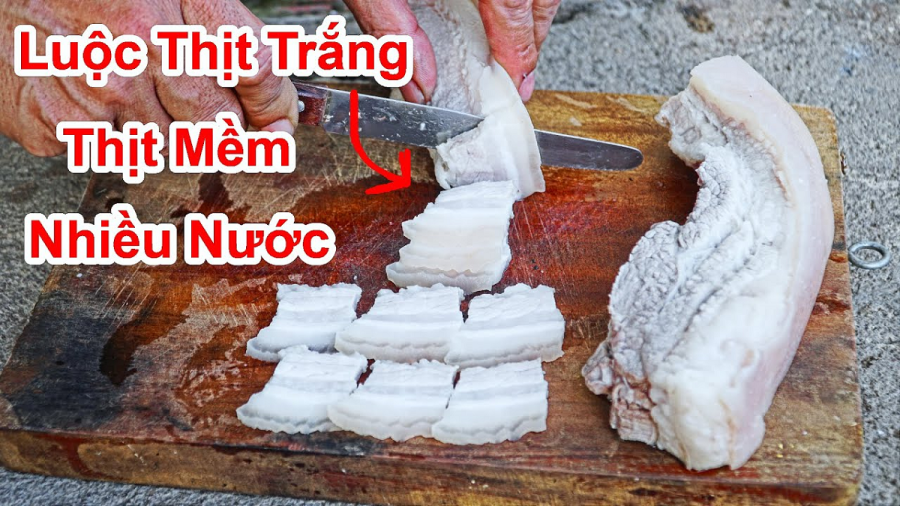
However, many people encounter the problem of meat not being well-cooked and having an unpleasant and bland odor. To solve this issue, you can apply the following tips:
Rinse the meat with diluted saltwater to disinfect and reduce the unpleasant odor. Choose meat with both lean and fatty parts to make the boiled meat delicious. Meat from the leg, pork belly… is usually tastier than meat from the loin or rump when boiled. Prepare additional ingredients such as vinegar or lime, a small piece of ginger, a dried onion, soft thread or softened lap to make the boiled meat more fragrant and tasty.
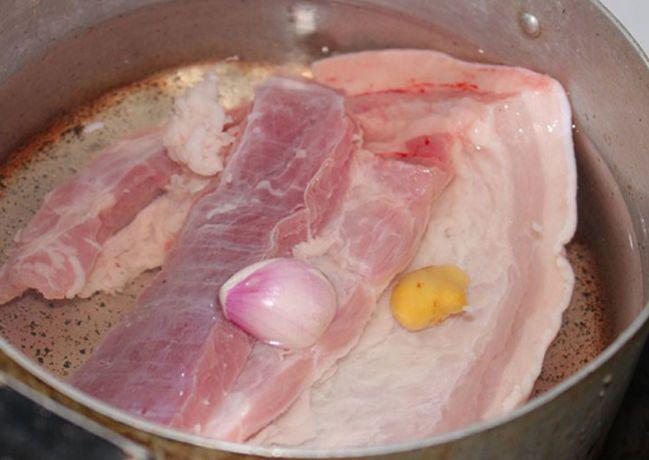
Tie the meat tightly with thread or softened lap
To have well-shaped sliced boiled meat, you can use thread or softened lap to tie the meat tightly before boiling. By tying the meat lengthwise, it will create beautiful round pieces of meat, and after boiling, you can slice it horizontally. The tighter you tie the meat, the better the shape of the meat will be.
If using thread, it is recommended to choose colorless white thread. For leg meat, it is best to tie it tightly before boiling to have a more round shape when sliced. Pork belly can be boiled without being tied. However, if you don’t have thread or prefer not to use it, you can still put the meat directly into the pot to boil.
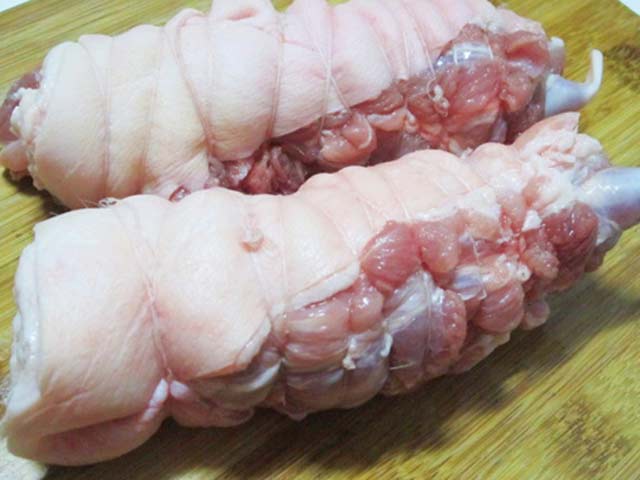
Why should you boil the meat twice?
To have delicious and odor-free meat, you can boil the meat twice. In the first round, place the meat in the pot, pour enough water, and boil for 2-3 minutes. Then, add a few drops of vinegar or lemon juice to the pot to remove the odor and make the meat whiter. Next, discard the boiling water, rinse the meat with warm water, and prepare for the second round of boiling.
For the second round, prepare a pot of boiling water and add the meat along with a few pinches of salt, thin slices of ginger, and a peeled dried onion. Simmer the pot on low heat and continue boiling the meat until it is cooked. When cooked, the meat will be light and fragrant for you to enjoy.
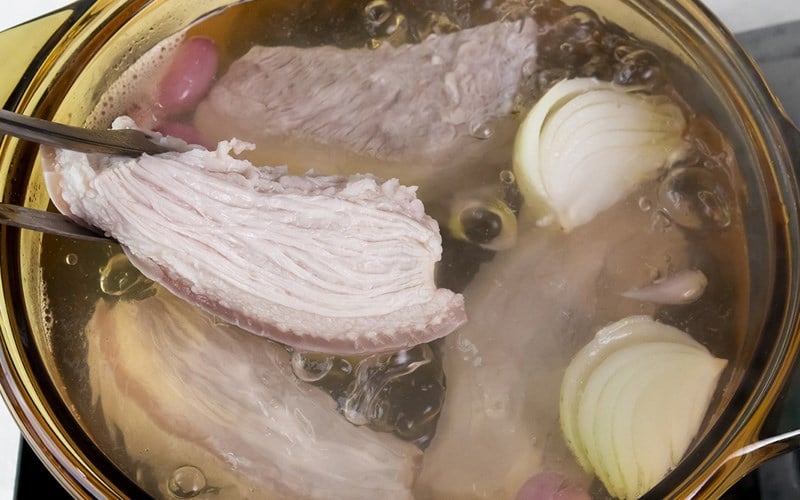
Add salt, ginger, and onion
Salt helps distribute the boiling water evenly, ginger removes the unpleasant odor, and onion adds a delicious flavor to the boiled meat. When boiling the meat, you should simmer the water over medium heat until the meat is cooked. To check, you can use a fork to poke the meat. If the meat releases pink-colored water, you should boil it for another 5 minutes. If the meat is cooked, the fork will easily penetrate it, and there will be no pink-colored water.
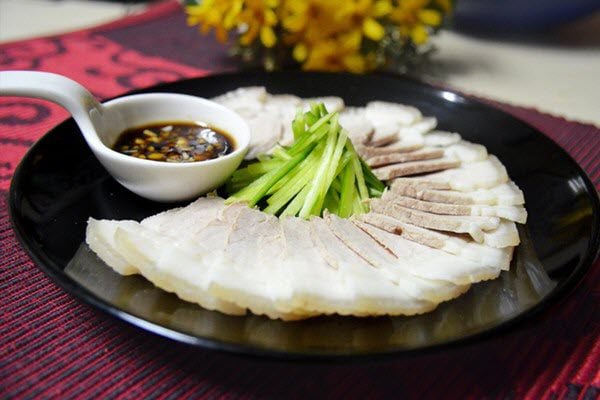
Once the meat is cooked, remove it and immerse it in a bowl of cold water with a few ice cubes. The cold water will help the meat contract and maintain its shape, avoiding dryness and color loss. After the meat has completely cooled, you can slice it for immediate use.
If you want the meat to be evenly sliced and more beautiful, you can keep it in the refrigerator for a few hours. Before packaging, tightly wrap the meat with plastic wrap and leave it in the refrigerator for a few hours to firm up and make it easier to slice.
Transform Your Meat with a Dash of Dried Onion: Say Goodbye to Unpleasant Odors, Hello to Deliciousness Without the Fat, Everyone’s Favorite.
Do not boil meat with salt and water: This is the secret seasoning for tender and flavorful white meat, without drying it out.

Many people believe that boiling meat only requires salt and water. However, this is not the most delicious and nutrient-rich way to cook meat.


































